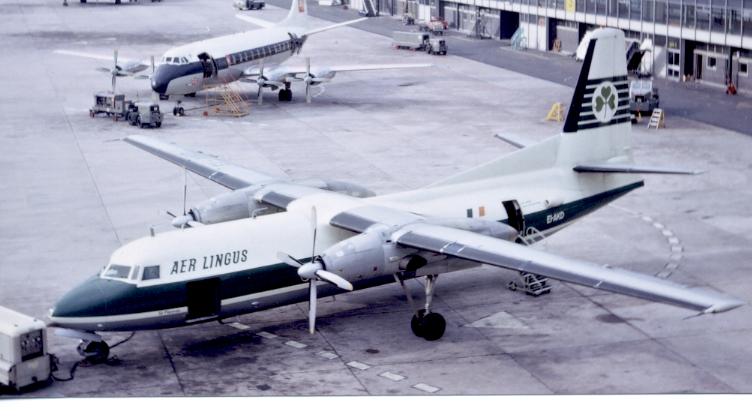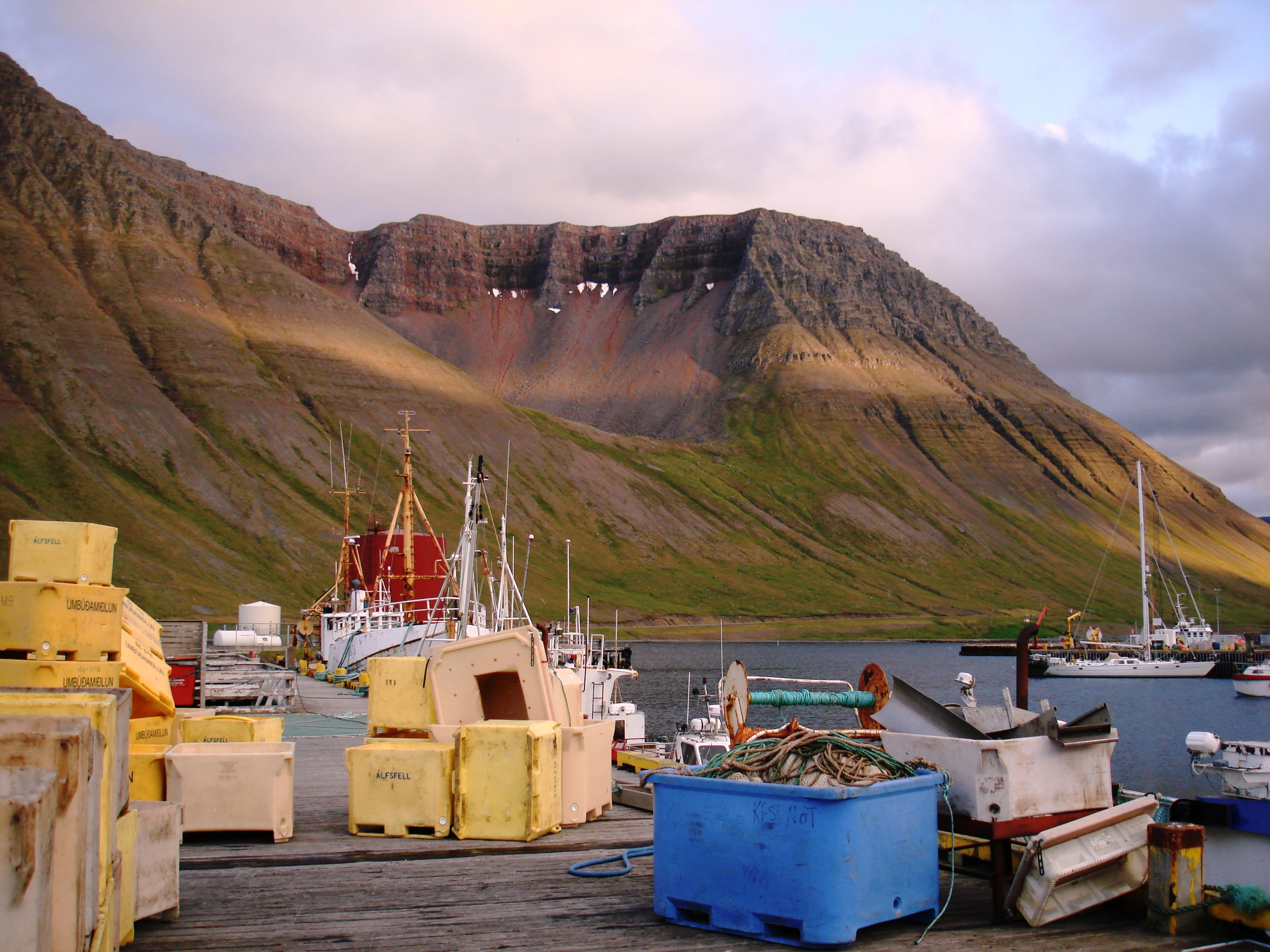|
รsafjรถrรฐur Airport
รsafjรถrรฐur Airport ( is, รsafjarรฐarflugvรถllur ) is an airport serving รsafjรถrรฐur, a town in the Westfjords ( is, Vestfirรฐir) region in northwestern Iceland. History Planning for the airport started in 1958 construction of the runway started the same year. It was originally 1.100 meters long and the cost of the construction was 4.8 million ISK. It was formally opened on 2 October 1960 with ''Gljรกfaxi'', a Douglas DC-3 from Flugfรฉlag รslands, being the first plane to land on the airport. Approach Located in a fjord, the approach to the runway requires aircraft to fly close to the surrounding terrain, making it unique and more challenging than at most airports. Approaches generally cannot be straight-in for either direction, and when landing to the northeast, a full 180 degree turn must be made before touchdown. The sharp turn and the approach is featured as one of the landing challenges in Microsoft Flight Simulator 2020. Airlines and destinations Statistics Passe ... [...More Info...] [...Related Items...] OR: [Wikipedia] [Google] [Baidu] |
Vรญsir
''Vรญsir'' was an Icelandic newspaper founded in December 1910 by Einar Gunnarsson, originally only distributed in and around Reykjavรญk. In 1967, Jรณnas Kristjรกnsson became its editor. In 1975, he left the paper after a conflict with the ownership group of on his editorial policy and founded Dagblaรฐiรฐ. On 26 November 1981, Vรญsir and Dagblaรฐiรฐ merged to form Dagblaรฐiรฐ Vรญsir ''DV'' (''Dagblaรฐiรฐ Vรญsir'') is an online newspaper in Iceland published by Torg ehf. It came into existence as a daily newspaper in 1981 when two formerly independent newspapers, Vรญsir and Dagblaรฐiรฐ, merged. Early on it was one of the .... References 1910 establishments in Iceland Publications established in 1910 Daily newspapers published in Iceland Defunct newspapers published in Iceland Mass media in Reykjavรญk Publications disestablished in 1981 {{Iceland-newspaper-stub ... [...More Info...] [...Related Items...] OR: [Wikipedia] [Google] [Baidu] |
Transport In Iceland
The modes of transport in Iceland are governed by the country's rugged terrain and sparse population. The principal mode of personal transport is the car. There are no public railways, although there are bus services. Transport from one major town to another, for example Reykjavรญk to Akureyri, may be by aeroplane on a domestic flight. The only ways of getting in and out of the country are by air and sea. Most of the country's transport infrastructure is concentrated near the Capital Region, which is home to 64% of the country's population. Rail Iceland has no public railways, although proposals to build a passenger line between Keflavรญk and Reykjavรญk have been made as well as proposals to build a light rail system in Reykjavรญk. In the past, locomotive-powered and hand-operated rails have been temporarily set up during certain construction projects, and have long since been dismantled. Some artifacts from their existence remains in museums and as static exhibits. Road ... [...More Info...] [...Related Items...] OR: [Wikipedia] [Google] [Baidu] |
RรV
Rรญkisรบtvarpiรฐ (RรV) (pronounced or ) ( en, 'The Icelandic National Broadcasting Service') is Iceland's national public-service broadcasting organization. Operating from studios in the country's capital, Reykjavรญk, as well as regional centres around the country, the service broadcasts an assortment of general programming to a wide national audience via three radio stations: Rรกs 1 and Rรกs 2, also available internationally; Rondรณ (only available via the Internet and digital radio); and one full-time television channel of the same name. There is also a supplementary, part-time TV channel, RรV 2, which transmits live coverage of major cultural and sporting events, both domestic and foreign, as required. History RรV began radio broadcasting in 1930 and its first television transmissions were made in 1966. In both cases coverage quickly reached nearly every household in Iceland. RรV is funded by a broadcast receiving licence fee collected from every income tax payer, ... [...More Info...] [...Related Items...] OR: [Wikipedia] [Google] [Baidu] |
Dagblaรฐiรฐ Vรญsir
''DV'' (''Dagblaรฐiรฐ Vรญsir'') is an online newspaper in Iceland published by Torg ehf. It came into existence as a daily newspaper in 1981 when two formerly independent newspapers, Vรญsir and Dagblaรฐiรฐ, merged. Early on it was one of the largest newspapers in Iceland and at one point had a 64% readership in Iceland. In the 1990s its readership started to dwindle and in 2003 its publisher was declared bankrupt. It was resurrected a week later by the publisher of Frรฉttablaรฐiรฐ. In 2006 it was changed from a daily newspaper into a weekly one. Since then it has changed publishers regularly and in 2018 its publisher, DV ehf., went bankrupt. Its assets were bought by a new publisher, . In December 2019, Torg ehf., the owner of Frรฉttablaรฐiรฐ, agreed to buy Dagblaรฐiรฐ Vรญsir from Frjรกls Fjรถlmiรฐlun ehf. The media has changed dramatically since its inception. Today it online only and focuses mainly on sensational crime stories, astrology, and domestic and foreign celebrity ... [...More Info...] [...Related Items...] OR: [Wikipedia] [Google] [Baidu] |
Keflavรญk Airport
Keflavรญk (pronounced , meaning ''Driftwood Bay'') is a town in the Reykjanes region in southwest Iceland. It is included in the municipality of Reykjanesbรฆr whose population as of 2016 is 15,129. In 1995, Keflavik merged with nearby Njarรฐvรญk and Hafnir to form the municipality of Reykjanesbรฆr. History Founded in the 16th century, Keflavรญk developed on account of its fishing and fish processing industry,Cathy Harlow, ''Iceland'', Landmark Visitors Guide, 3rd ed. 2004, , p. 57. founded by Scottish entrepreneurs and engineers. Later its growth continued from flight operations at the Keflavรญk International Airport which was built by the United States military during the 1940s. The airport used to hold a significant NATO military base and was a vital pre-jet refueling stop for trans-Atlantic commercial air traffic. It now serves as Iceland's main international hub. During World War II the military airfield served as a refueling and transit depot. During the Col ... [...More Info...] [...Related Items...] OR: [Wikipedia] [Google] [Baidu] |
Fokker F27 Friendship
The Fokker F27 Friendship is a turboprop airliner developed and manufactured by the Dutch aircraft manufacturer Fokker. It is the most numerous post-war aircraft manufactured in the Netherlands; the F27 was also one of the most successful European airliners of its era. The F27 was developed during the early 1950s with the intent of producing a capable successor to the earlier piston engine-powered airliners that had become commonplace on the market, such as the Douglas DC-3. A key innovation of the F27 was the adoption of the Rolls-Royce Dart turboprop engine, which produced substantially less vibration and noise which provided improved conditions for passengers; another major comfort feature was cabin pressurisation. Innovative manufacturing techniques were also employed in the aircraft's construction. On 24 November 1955, the F27 made its maiden flight; on 19 November 1958, the type was introduced to revenue service. Shortly after its introduction, the F27 was recognis ... [...More Info...] [...Related Items...] OR: [Wikipedia] [Google] [Baidu] |
Flugleiรฐir
Stodir ( is, Stoรฐir, FL Group prior to 4 June 2008) is a majority family-owned investment company located in Reykjavรญk, Iceland. The company was founded on July 20, 1973, under the name Flugleiรฐir. It was formed as a holding company for Loftleiรฐir and Air Iceland. FL Group was best known for its subsidiary Icelandair Group, which was sold in October 2006. Icelandair, Loftleidir Icelandic and other companies of Icelandair Group have been leaders in the Icelandic flight and tourism industry for about 70 years. The company was placed into administration in September 2008 after Glitnir, its largest investment, was part-nationalised by the Icelandic government. The company, then named Stodir, was restructured in 2009 and all shares delivered to its creditors. Between 2009 and 2016, all assets were sold and all debt repaid. In 2017, new shareholders acquired the company and Stodir was repositioned as an active investment company. History Before 2005 change The company th ... [...More Info...] [...Related Items...] OR: [Wikipedia] [Google] [Baidu] |
รsafjรถrรฐur Airport Control Tower
รsafjรถrรฐur (pronounced , meaning ''ice fjord'', literally ''fjord of ices'') is a town in the northwest of Iceland. The oldest part of รsafjรถrรฐur with the town centre is located on a spit of sand, or ''eyri'', in Skutulsfjรถrรฐur, a fjord which meets the waters of the larger fjord รsafjarรฐardjรบp. With a population of about 2,600, รsafjรถrรฐur is the largest settlement in the peninsula of Vestfirรฐir (Westfjords) and the administration centre of the รsafjarรฐarbรฆr municipality, which includesโbesides รsafjรถrรฐurโthe nearby villages of Hnรญfsdalur, Flateyri, Suรฐureyri, and รingeyri. History According to the Landnรกmabรณk (the book of settlement), Skutulsfjรถrรฐur was first settled by Helgi Magri Hrรณlfsson in the 9th century. In the 16th century, the town grew as it became a trading post for foreign merchants. Witch trials were common around the same time throughout the Westfjords, and many people were banished to the nearby peninsula of Hornstrandir, now a nat ... [...More Info...] [...Related Items...] OR: [Wikipedia] [Google] [Baidu] |
Reykjavรญk Airport
Reykjavรญk Airport ( Icelandic: ''Reykjavรญkurflugvรถllur'') is the main domestic airport serving Reykjavรญk, the capital of Iceland, located about from the city centre. Having shorter runways than the city's larger international airport Keflavรญk International Airport, which is sited out of town, it only serves internal flights within Iceland, small international charters, transatlantic ferry flights and private flights. It can also serve as alternate airport for flights inbound towards Keflavรญk, in case of adverse weather conditions there. To distinguish from the larger Keflavรญk International Airport outside Reykjavรญk, it is sometimes unofficially in English called ''Reykjavik City Airport'' (also by the airport administration), and also ''Reykjavik Domestic Airport''. Reykjavรญk Airport is the main hub of Eagle Air and the domestic hub of Icelandair, and it currently has two runways (as of January 2022). Reykjavรญk Airport is owned and operated by the state enterpris ... [...More Info...] [...Related Items...] OR: [Wikipedia] [Google] [Baidu] |
Icelandair
Icelandair is the flag carrier airline of Iceland, with its corporate head office on the property of Reykjavรญk Airport in the capital city Reykjavik. Linked from here It is part of the Icelandair Group and operates to destinations on both sides of the Atlantic Ocean from its main hub at Keflavรญk International Airport. The geographical position of Iceland is convenient for one-stop transatlantic flights, which is one pillar of the airline's business strategy, along with traffic to, from, and within the country. History Flugfรฉlag รslands in the early decades Icelandair traces its roots back to 1937, when Flugfรฉlag Akureyrar was founded in Akureyri on the north coast of Iceland. Flight operations started in 1938 with a single Waco YKS-7 configured as a floatplane. In 1939 the airline was grounded when this aircraft was destroyed in a capsizing accident. The company moved to Reykjavรญk, where it acquired another Waco aircraft and was relaunched in 1940 as Flugfรฉlag ร ... [...More Info...] [...Related Items...] OR: [Wikipedia] [Google] [Baidu] |
Frรฉttablaรฐiรฐ
''Frรฉttablaรฐiรฐ'' ( en, The Newspaper) is a free Icelandic newspaper. It is distributed five days per week. History and profile ''Frรฉttablaรฐiรฐ'' was established in 2001. It was originally owned primarily by the media group ''365''. The paper was published six days per week, Monday - Saturday until September 2003 when its frequency was switched to daily. As of 2019 it was published six days per week again, and as of 2020, it was published five days per week. It is entirely funded by advertising. ''Frรฉttablaรฐiรฐ'' has been described as siding politically with the Social Democratic Alliance (Samfylkingin) and for favouring Icelandic membership of the European Union. However, some of its editors have sided with the conservative Independence Party (Sjรกlfstรฆรฐisflokkurinn), and its former editor-in-chief and regular columnist is Independence Party's former leader and Prime Minister รorsteinn Pรกlsson. In the period of 2001โ2002 the paper had a circulation of 70,000. In ... [...More Info...] [...Related Items...] OR: [Wikipedia] [Google] [Baidu] |


_CS64_(cropped).jpg)
